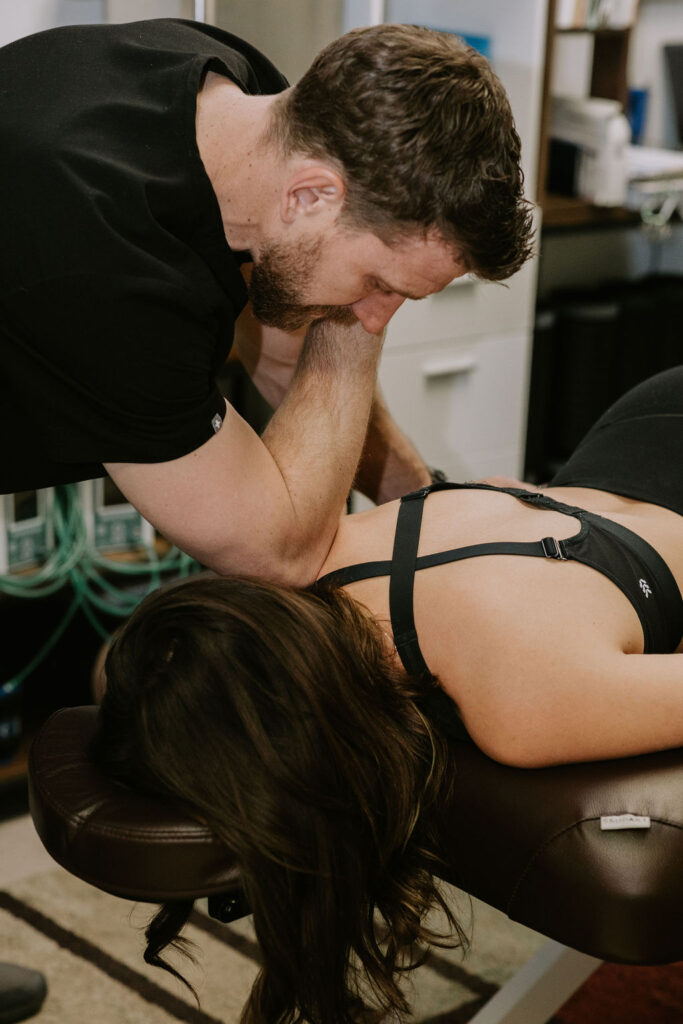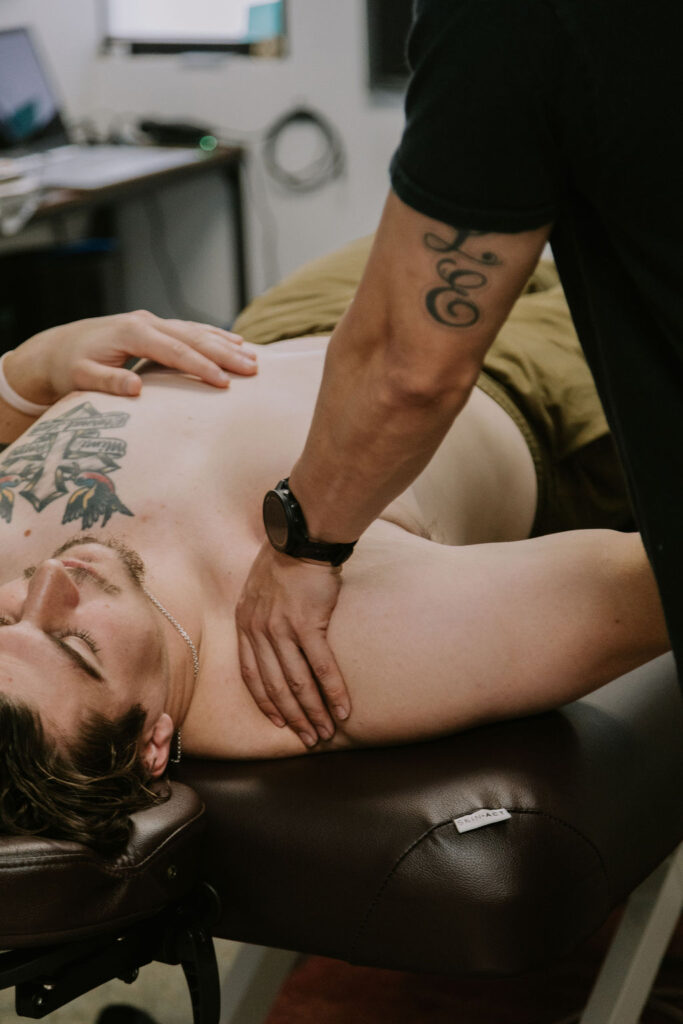Deep Tissue Massage Techniques: What to Expect
Deep tissue massage is a sought-after therapy for individuals in Albuquerque seeking relief from chronic pain, muscle tension, and stress. As its name suggests, deep tissue massage targets the deeper layers of muscle and connective tissue to extend massage’s normal health benefits beyond relaxation.
Athletes interested in enhancing their performance or recovery from injury can benefit just as much as professionals managing work-related stress. This versatile method has many applications. However, it’s different from a regular massage, which is intended to promote relaxation.
This comprehensive guide explains the different deep tissue massage techniques and what you can expect from your first session.
What is deep tissue massage?
Deep tissue massage in Albuquerque is a specialized form of therapeutic massage therapy that focuses on the deeper layers of muscle and connective tissue in the body. Unlike a traditional Swedish massage that aims to relax and rejuvenate the surface muscles, deep tissue massage uses more intense pressure and specific techniques to reach deeper muscle groups and the fascia.
Slow, deliberate strokes and deep pressure – often applied with fingers, thumbs, and elbows – are the hallmarks of deep tissue massage. The method breaks down scar tissue and areas of rigid tissue that can cause pain and limit motion. It effectively relieves chronic muscle tension.
How deep tissue massage works
Deep tissue massage works by addressing the deeper layers of muscles and connective tissues. Common techniques used with this method realign muscle fibers and connective tissues to improve circulation and promote natural healing.
Regular sessions can help restore proper movement and function, making it an excellent choice for people with chronic pain or musculoskeletal issues.
What are some deep tissue massage techniques?
Deep tissue massage uses a variety of specialized techniques designed to target deeper muscle layers and connective tissues, providing relief from chronic pain and tension. Each technique has its own approach and benefits, making deep tissue massage a versatile and effective therapeutic option.
Slow strokes and deep pressure
Slow strokes and deep pressure penetrate the deeper layers of your muscle and fascia. Massage therapists use their hands, fingers, and elbows to deliver focused pressure designed to relieve pain and release tightness.
This technique is especially beneficial for breaking down scar tissue and alleviating chronic muscle tension. If you work at a computer all day, you may find this type of massage works well for releasing the muscle knots caused by your posture and repetitive movements.

Stripping
Stripping involves using the thumbs or elbows to glide along the length of your muscle fibers. Pressure is applied consistently and controlled.
While it may feel weird, this technique helps elongate muscles and release tightness. Athletes or others with repetitive strain injuries may find stripping improves their muscle flexibility and reduces the risk of future injury.

Friction
Friction requires your massage therapist to apply pressure across muscle fibers with circular or crosswise movements. Using these motions targets the connective tissues, breaking down adhesions and promoting tissue repair.
People with significant scar tissue that limits movement and causes pain may find this method effective for improving their flexibility and mobility. Friction can restore normal function and reduce discomfort in the affected areas when done regularly.
Myofascial Release
Myofascial release uses gentle, sustained pressure on the connective tissue that surrounds your muscles and organs. Your massage therapist holds the pressure for several minutes to allow for stretching and the release of restrictions.
This technique reduces pain by targeting the connective tissue. People who suffer from chronic pain conditions – especially those affecting the back – find it helps restore proper alignment and function in their bodies.
Trigger Point Therapy
Trigger point therapy applies concentrated pressure to specific points within the muscle tissue. Your massage therapist determines where those points are by asking questions about where your muscles feel tender or sore.
Once pressure is applied, your massage therapist maintains it until the pressure is released and the muscle relaxes.
People who suffer from headaches, neck pain, and lower back pain find trigger point therapy effective in treating their conditions. Trigger point therapy can feel intense when it’s happening. However, it reduces pain and discomfort once the muscles are released.

What should you expect during your deep tissue massage session?
Scheduling a deep tissue massage in Albuquerque can feel intimidating if you don’t know what to expect from your session. Don’t be afraid to ask your therapist questions to help alleviate any anxiety and ensure you have a positive experience.
While procedures may vary slightly, most deep tissue massage therapists use a similar process to maximize the therapeutic benefits and ensure your comfort.
Here’s what you can expect:
- Initial consultation. If it’s your first time, your massage therapist conducts a consultation to gather important information about your medical history, current pain points, and any specific massage goals. You can expect questions about past injuries, chronic conditions, and any areas of discomfort. Alert your massage therapist to any chronic conditions so they can avoid techniques that may aggravate them.
- Preparation. After your consult, you’ll be led to a private room where you can undress to your comfort level. You’ll lie on a massage table under a sheet or towel for modesty and warmth. The therapist leaves the room to allow you privacy while you get ready.
- Massage session. You can expect a series of the techniques described earlier during your massage session. Slow strokes, deep pressure, and other methods are tailored to the specific needs you discussed during your initial consultation. Open communication with your therapist during the session is the key to receiving an effective massage. Breathe deep and don’t be afraid to speak up if something feels uncomfortable.
- Post-massage. It’s normal to feel a mix of relief and mild soreness after your massage. Deep tissue therapy brings relief to chronic pain areas, but the methods used to achieve that release can leave muscles feeling tender for a few days after your session. Staying hydrated and doing gentle stretches can help.
Choosing a deep tissue massage therapist in Albuquerque
You have options for receiving deep tissue massage therapy in Albuquerque. Don’t be afraid to do some research before you settle on a therapist.
Always check a massage therapist’s credentials and experience before booking a session. New Mexico requires all massage therapists to pass a national examination offered by the National Certification Board for Therapeutic Massage and Bodywork or the Federation of State Massage Therapy Boards. You can visit the websites of these organizations to verify if the massage therapist you’ve chosen is licensed.
Once you’ve verified licensure, you can read reviews and customer testimonials. Look for consistent positive feedback.
Asking for recommendations from family, friends, and healthcare providers is another way to find reputable therapists who deliver quality massage services.
If you’re still on the fence, request a consultation to discuss your needs and gauge a provider’s approach. You can use this time to assess their communication skills, professionalism, and comfort level.
